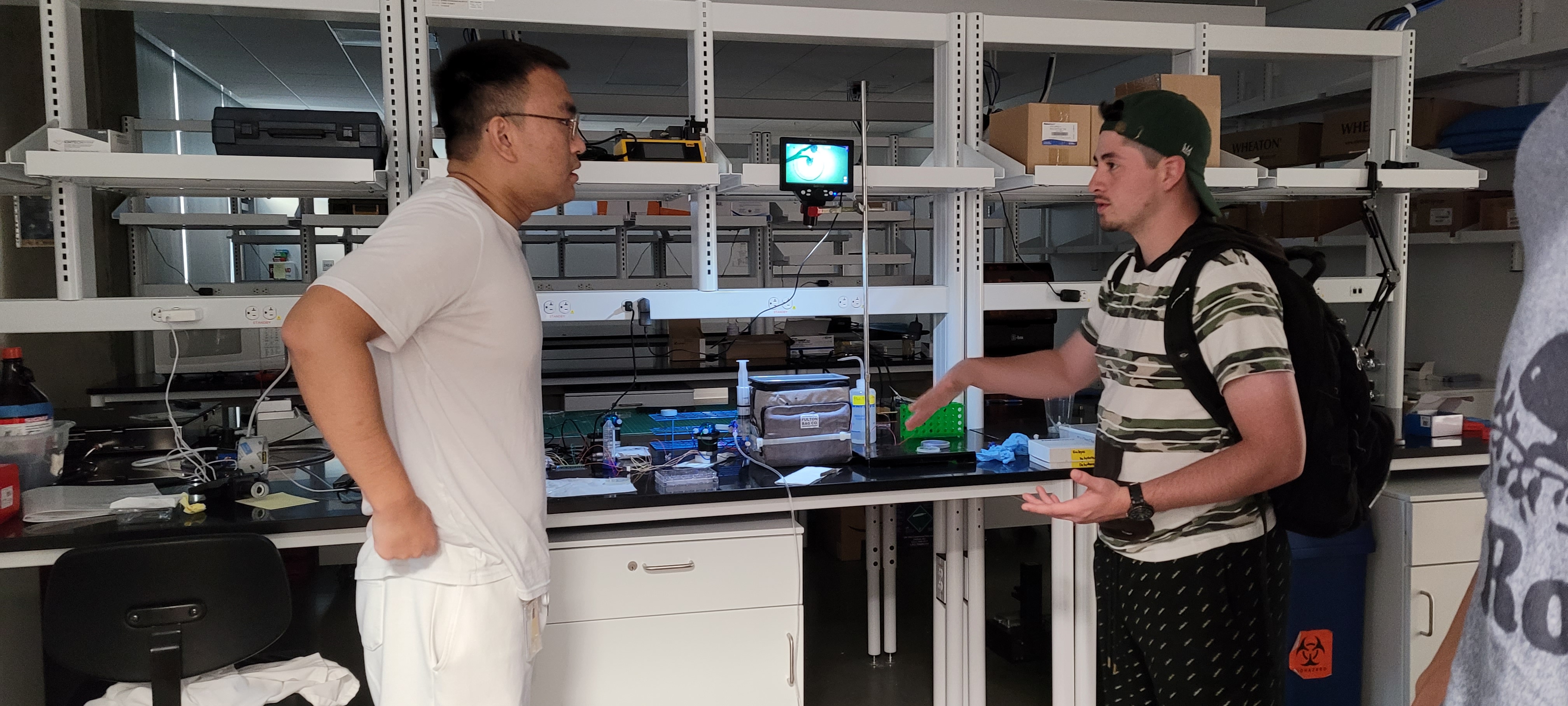The Office of Technology, Innovation, and Industry Relations (OTIIR) connects UC Merced faculty, students, and alumni with business partners to commercialize their innovations, develop new research, start new ventures, and strengthen and diversify the economy.

Preserve your intellectual property rights! OTIIR assists UC Merced inventors through the process of protecting innovations prior to publication or public disclosure. The initial step in securing the technology is to disclose your research or invention to OTIIR using the Disclosure Form
Q: Why is it important to disclose?
A: It is important to disclose an invention because it establishes a formal record of the innovation, which can help in securing intellectual property rights such as patents. Disclosing an invention also enables potential commercialization opportunities, facilitates collaboration with industry that can further develop the technology, and ensures compliance with UC policies and legal requirements.
Q: Who can disclose?
A: Faculty, Post-Doc, Graduate Students, or Staff can submit a Disclosure Form for an innovation developed here at UC Merced.
Q: When do I disclose?
A: ANYTIME, ALWAYS, AS EARLY AS POSSIBLE! Disclose before a public disclosure or publication. This early disclosure initiates the patent process and provides a framework for protecting intellectual property rights. Disclosing an invention before presenting it at conferences, submitting manuscripts for publication, or discussing it in public forums avoids the potential loss of patent rights.
A comprehensive analysis of the technology is conducted to assess its commercial viability. This evaluation will encompass various aspects such as market demand, patentability, competitive landscape, potential barriers to entry, and financial feasibility. The goal is to provide an assessment that can guide decisions regarding the innovation’s market potential and the feasibility of bringing it to market successfully. This analysis also serves as a critical tool in determining whether to proceed with patenting the technology.
Q: Why does my technology need to be reviewed?
A: The review process provides various assessments of the technology for strategic decision-making to ensure that University resources, including funding for patent filing and maintenance, are allocated efficiently to technologies with the greatest impact.
Q: How long does the review take?
A: The review process can take between 3-4 weeks.
Q: What are some factors that are considered?
A: Factors that are considered during the review process are market demand, patentability, competitive landscape, potential barriers to entry, financial feasibility, prior publications or public disclosures, prior art references, funding source, social impact, and many other factors.
Intellectual property protection plays a crucial role in fostering innovation, protecting intellectual property, stimulating economic growth, and promoting technological progress for the benefit of society. Patent protection provides innovators the exclusive right to make, use, and sell their technology for a limited period. In exchange for patent protection, detailed information about the technology is provided in the patent application. This disclosure contributes to the pool of public knowledge and encourages further innovation and research by enabling others to build upon existing ideas. Patents also promote innovation by stimulating economic growth and competitiveness.
Q: What is a patent?
A: A patent is a form of intellectual property right granted by the government to an inventor or assignee, giving them exclusive rights to prevent others from making, using, selling, or importing their invention without permission for a limited period of time. In essence, a patent is a legal monopoly that rewards inventors for their creativity and encourages innovation by providing them with the opportunity to profit from their inventions.
Q: How long does it take to file a patent application?
A: It generally takes between 2-3 months for a patent application to be filed.
Q: Why does it take so long to file a patent application?
A: This process is multifaceted and complex because it involves consultations with patent attorneys, collection of all pertinent information (drawings, figures, examples, prior publications, etc.), providing sufficient time for the patent attorney to draft the patent application, and thorough review by inventors to ensure precision and accuracy.
Non-confidential information about the technology is uploaded to Inpart, customer discovery can be conducted through NSF i-Corps, and marketing strategies may be implemented to maximize the technology’s commercial opportunities.
Q: What is Inpart?
A: Inpart is an online platform used to market UC Merced's technologies. The platform connects researchers with industry to initiate meaningful conversations that help to drive positive impact from research, matching innovation and expertise on a level playing field. The platform offers access to two products: Inpart Connect and Discover.
Connect is an online matchmaking platform to connect with industry teams to commercialize academic innovations and expertise that are available and seeking collaboration.
Discover is a customized scouting platform used by innovation-driven companies to profile the global landscape of academia across an active network of institutes, either through ‘Industry Calls for Opportunities’ or ‘Request for Proposal’ campaigns that find and confirm potential solutions to specific R&D challenges or requirements.
To unlock exciting new collaborations for your research, join Inpart today! Sign up for your free account here.
Q: What other resource is used to market the technology?
A: We utilize TreMonti Consulting, Inc. to actively market patented technology. TreMonti has extensive experience in providing advice and assistance to universities regarding intellectual property asset management and marketing.
Q: How long does this process take?
A: While there is no straightforward answer, marketing a portfolio can take months to years. This process depends on many factors such as the field, technology, market demand, marketing strategy and marketability, negotiations, and any relevant legal and/or administrative procedures.

